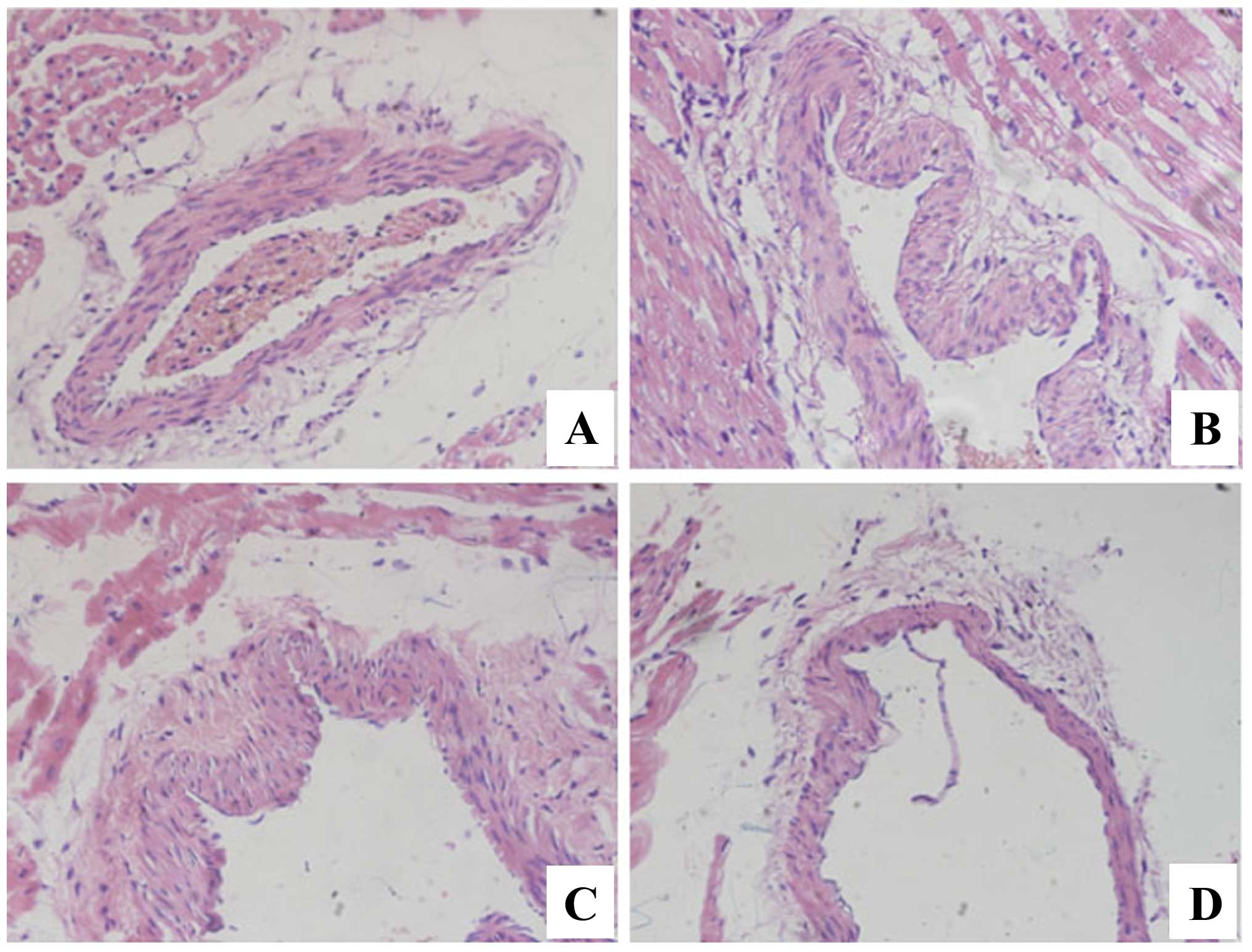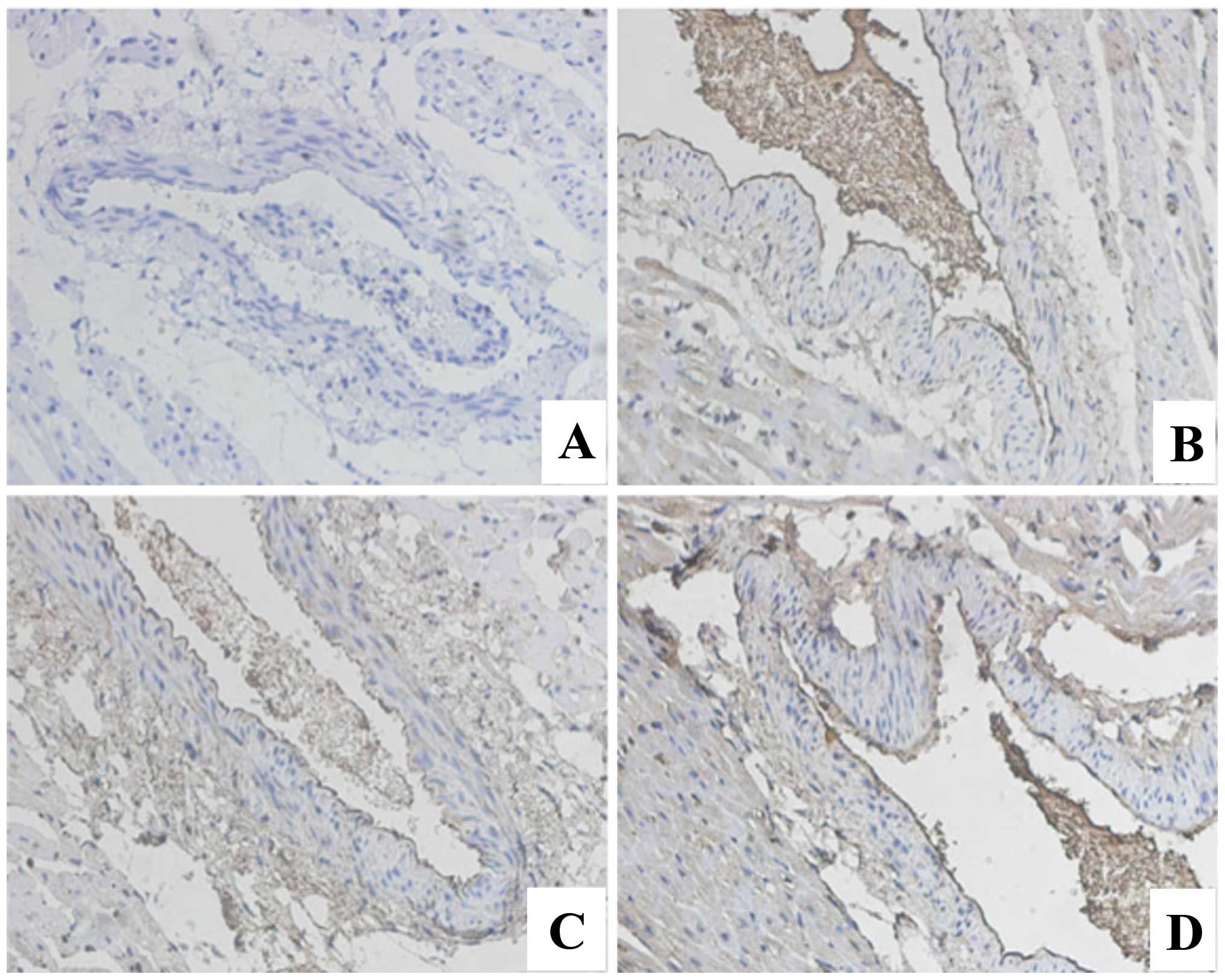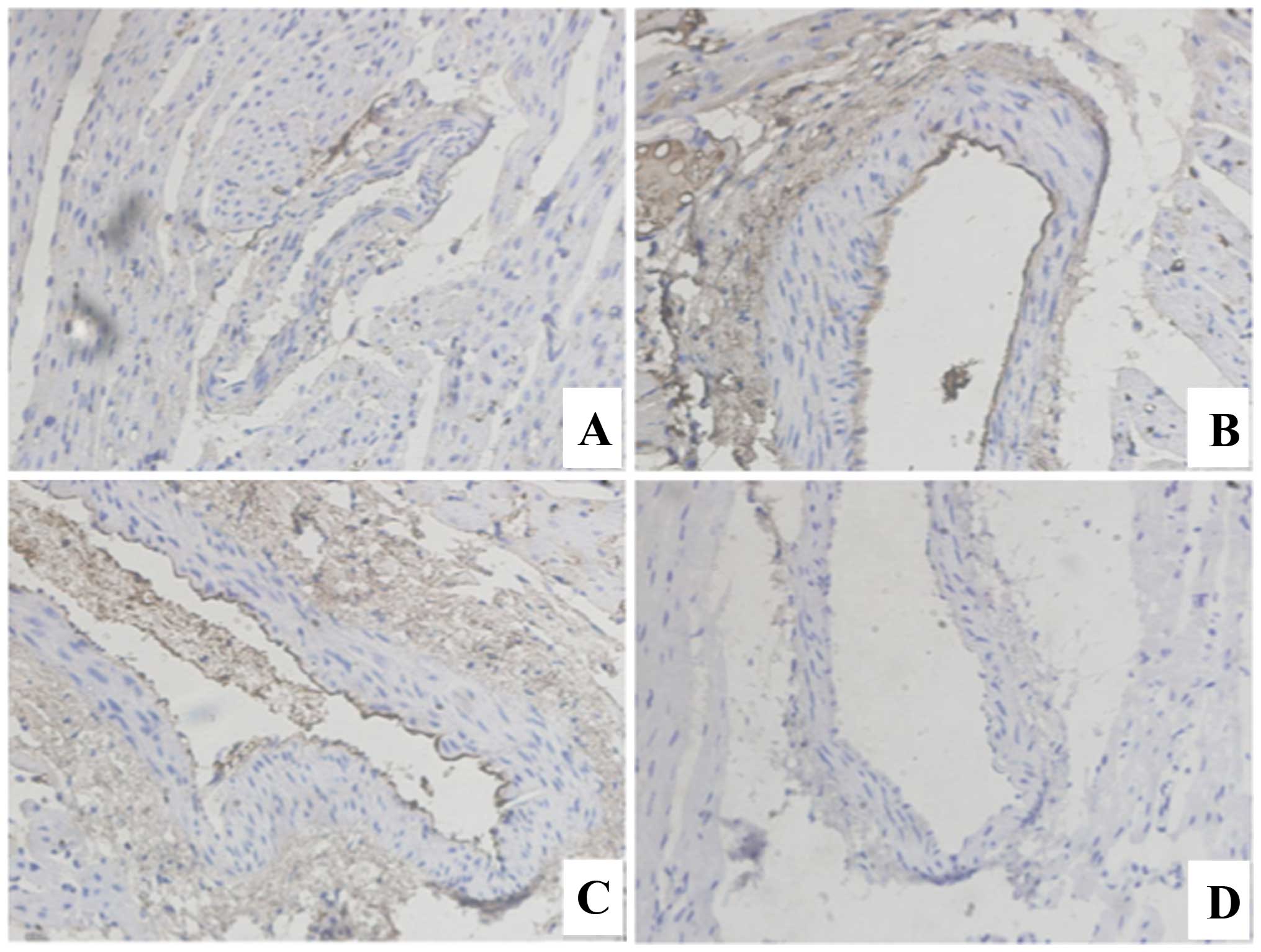|
1
|
Patel RM and Shulman ST: Kawasaki disease:
a comprehensive review of treatment options. J Clin Pharm Ther.
40:620–625. 2015. View Article : Google Scholar : PubMed/NCBI
|
|
2
|
Tanaka N: Kawasaki disease (acute febrile
infantile muco-cutaneous lymph node syndrome) in Japan;
relationship with infantile periarteritis nodosa. Pathol Microbiol
(Basel). 43(2-O): 204–218. 1975.PubMed/NCBI
|
|
3
|
Fujiwara H and Hamashima Y: Pathology of
the heart in Kawasaki disease. Pediatrics. 61:100–107.
1978.PubMed/NCBI
|
|
4
|
Newburger JW, Takahashi M, Gerber MA,
Gewitz MH, Tani LY, Burns JC, Shulman ST, Bolger AF, Ferrieri P,
Baltimore RS, et al: Committee on Rheumatic Fever, Endocarditis,
and Kawasaki Disease, Council on Cardiovascular Disease in the
Young, American Heart Association: Diagnosis, treatment, and
long-term management of Kawasaki disease: a statement for health
professionals from the Committee on Rheumatic Fever, Endocarditis,
and Kawasaki Disease, Council on Cardiovascular Disease in the
Young, American Heart Association. Pediatrics. 114:1708–1733. 2004.
View Article : Google Scholar : PubMed/NCBI
|
|
5
|
Dajani AS, Taubert KA, Gerber MA, Shulman
ST, Ferrieri P, Freed M, Takahashi M, Bierman FZ, Karchmer AW and
Wilson W: Diagnosis and therapy of Kawasaki disease in children.
Circulation. 87:1776–1780. 1993. View Article : Google Scholar : PubMed/NCBI
|
|
6
|
Matsubara K and Fukaya T: The role of
superantigens of group A streptococcus and staphylococcus aureus in
Kawasaki disease. Curr Opin Infect Dis. 20:298–303. 2007.
View Article : Google Scholar : PubMed/NCBI
|
|
7
|
Ichiyama T, Yoshitomi T, Nishikawa M,
Fujiwara M, Matsubara T, Hayashi T and Furukawa S: NF-kappaB
activation in peripheral blood monocytes/macrophages and T cells
during acute Kawasaki disease. Clin Immunol. 99:373–377. 2001.
View Article : Google Scholar : PubMed/NCBI
|
|
8
|
Yu X, Hirono KI, Ichida F, Uese K, Rui C,
Watanabe S, Watanabe K, Hashimoto I, Kumada T, Okada E, et al:
Enhanced iNOS expression in leukocytes and circulating endothelial
cells is associated with the progression of coronary artery lesions
in acute Kawasaki disease. Pediatr Res. 55:688–694. 2004.
View Article : Google Scholar : PubMed/NCBI
|
|
9
|
Kariyazono H, Ohno T, Khajoee V, Ihara K,
Kusuhara K, Kinukawa N, Mizuno Y and Hara T: Association of
vascular endothelial growth factor (VEGF) and VEGF receptor gene
polymorphisms with coronary artery lesions of Kawasaki disease.
Pediatr Res. 56:953–959. 2004. View Article : Google Scholar : PubMed/NCBI
|
|
10
|
Peng Q, Zhou TF, Chen CH, Hua YM, Liu HM,
Hong H, Zhang LY and Wu Q: Clinical value of serum matrix
metalloproteinase-9 and tissue inhibitor of metalloproteinase-1 for
the prediction and early diagnosis of coronary artery lesion in
patients with Kawasaki disease. Zhonghua Er Ke Za Zhi. 43:676–680.
2005.(In Chinese). PubMed/NCBI
|
|
11
|
Onouchi Z, Ikuta K, Nagamatsu K, Tamiya H,
Sakakibara Y and Ando M: Coronary artery aneurysms develop in
weanling rabbits with serum sickness but not in mature rabbits. An
experimental model for Kawasaki disease in humans. Angiology.
46:679–687. 1995. View Article : Google Scholar : PubMed/NCBI
|
|
12
|
Shulman ST and Rowley AH: Kawasaki
disease: insights into pathogenesis and approaches to treatment[J].
Nat Rev Rheumatol. 11:475–482. 2015. View Article : Google Scholar : PubMed/NCBI
|
|
13
|
Yamei H, Zaifang J and Futang Z: Pract
Paidonosology. 2012.16472012.
|
|
14
|
Qi Z, Limin X and Shuxia D: Changes of
serum VEGF and NO levels in children with Kawasaki disease and its
clinical significance. J Med Res. 36:100–102. 2007.
|
|
15
|
Dey N, Crosswell HE, De P, Parsons R, Peng
Q, Su JD and Durden DL: The protein phosphatase activity of PTEN
regulates SRC family kinases and controls glioma migration. Cancer
Res. 68:1862–1871. 2008. View Article : Google Scholar : PubMed/NCBI
|
|
16
|
Jiang BH, Zheng JZ, Aoki M and Vogt PK:
Phosphatidylinositol 3-kinase signaling mediates angiogenesis and
expression of vascular endothelial growth factor in endothelial
cells. Proc Natl Acad Sci USA. 97:1749–1753. 2000. View Article : Google Scholar : PubMed/NCBI
|
|
17
|
Garlich JR, De P, Dey N, Su JD, Peng X,
Miller A, Murali R, Lu Y, Mills GB, Kundra V, et al: A vascular
targeted pan phosphoinositide 3-kinase inhibitor prodrug, SF1126,
with antitumor and antiangiogenic activity. Cancer Res. 68:206–215.
2008. View Article : Google Scholar : PubMed/NCBI
|
|
18
|
Alvarez Y, Astudillo O, Jensen L, Reynolds
AL, Waghorne N, Brazil DP, Cao Y, O'Connor JJ and Kennedy BN:
Selective inhibition of retinal angiogenesis by targeting PI3
kinase. PLoS One. 4:e78672009. View Article : Google Scholar : PubMed/NCBI
|
|
19
|
Carracedo A and Pandolfi PP: The PTEN-PI3K
pathway: of feedbacks and cross-talks. Oncogene. 27:5527–5541.
2008. View Article : Google Scholar : PubMed/NCBI
|
|
20
|
Carnero A, Blanco-Aparicio C, Renner O,
Link W and Leal JF: The PTEN/PI3K/AKT signalling pathway in cancer,
therapeutic implications. Curr Cancer Drug Targets. 8:187–198.
2008. View Article : Google Scholar : PubMed/NCBI
|
|
21
|
Rodríguez-Escudero I, Roelants FM, Thorner
J, Nombela C, Molina M and Cid VJ: Reconstitution of the mammalian
PI3K/PTEN/Akt pathway in yeast. Biochem J. 390:613–623. 2005.
View Article : Google Scholar : PubMed/NCBI
|

















